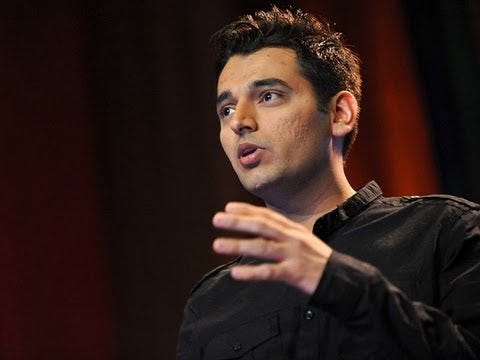Technology Innovation vs Behavioral Change.
"The future is already here. It is just not evenly distributed." -William Gibson
I remember having a conversation about wearable computer interfaces with someone in my team, some 10 years ago, after his job interview. I subsequently hired him and worked with him for a long time, and he became a great friend.
(I have had similar conversations over the past decade with different people, so it is possible that they are merging into my memory).
I had recently seen the TED talk for SixthSense by Pranav Mistry and was excited about augmented reality (more than VR) and its potential for making human-computer interaction more fluid and “natural”.
The conversation quickly evolved toward what was more challenging to innovate upon: recording data vs consuming data. My perspective was that consuming data was relatively easier: Augmented Reality already existed and, while somewhat distracting, it wouldn’t be too difficult to overlay it, be it through a projector, or through AR glasses.
Then GoogleGlass launched in 2013, and while the product seemed ready to take over the world, it never got to overcome the awkwardness of being a barrier between people and reality. The problem with Google Glass was not a technical barrier, it was a social one. The product was too early for its own good. And who could have foreseen that its users were going to be called “gla**holes”, right? Such a catchy name…
But through subsequent conversations, I realized it was not about what the technology could do, it was about unlearning “the way things are done“. Sometimes -even when the innovation is an improvement- it fails because the existing way of doing things is so embedded into everyday habits, that it is hard to unlearn. Think of all the proposed keyboard layouts as alternatives to QWERTY. Some people argue that DVORAK is more efficient than the traditional layout, and yet, QWERTY is not going anywhere anytime soon.
I remember thinking that whoever created a truly portable, wearable computer that got rid of the awkward tyranny of keyboards and screens (which need to be small to be portable, but reasonably big to be usable) would make a lot of money.
At the time, I had been impressed with Thalmic Labs MYO armband, which had been the winner of the 2014 Web Summit Conference in Dublin. That seemed very promising, but although the product had some relative success, the technology seems to be a dead end when it comes to mass adoption, at least for now.
These days, the new darling of innovation is AI, and one clever combination of hardware+software called AI Pin seems to have caught a lot of attention recently. It includes AI and a projector that, among other things, transforms every surface into an interface. According to the parent company Humane
“The connected and intelligent clothing-based wearable device uses a range of sensors that enable contextual and ambient compute interactions. A selection of these interactions were recently previewed for the first time publicly in Imran Chaudhri’s TED Talk, “The disappearing computer — and a world where you can take AI everywhere”.”
(this is from their website and yes, there seems to be a missing “r” in “compute”)
The challenge this new device will have is the same as its predecessors:
the device is not the innovation, the true innovation is the behavioral change the device encourages and enables. The device is just the vehicle for the innovation.
Just like the iPod and iPhone changed our behaviors, the new devices that aim to survive, take hold, and thrive, need to shape the way users interact with reality. Or else they will become a dusty relic of “the future that could have been”.
A lot of this discussion permeates through my most recent favorite book: “Build: An Unorthodox Guide to Making Things Worth Making” by Tony Fadell. This is a highly recommended reading for someone working in Product Management, whether it is on hardware or software.
A good way to represent this dilemma is with the Product Management mantra:
"Fall in love with the problem, not the solution.”
Which, coincidentally, is the name of the book I am starting to read this week, by Uri Levin.
So, in summary: (desired) behavioral change is the problem, and the device is the solution. Companies that aim to stay and succeed, better set the right goals regarding desired behaviors.
And, circling back to the subtitle of this article and the quote by William Gibson, the arrival of the future is signaled by a persistent change in behavior.
Did you enjoy the article?
Comment, help me spread the word and subscribe now to
It’s free! (for now, at least 😉 ).




